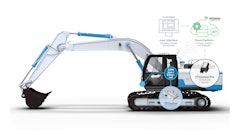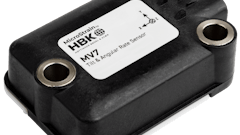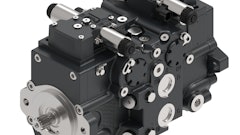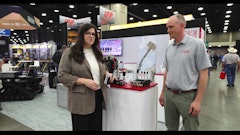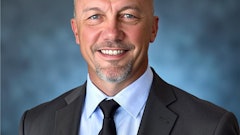For more than 160 years, Nye Lubricants has been solving customer problems. William F. Nye started it all in 1844 by realizing that a special kind of whale oil found in the head and jaw was good for more than burning in lamps. It had lubricating properties and stayed liquid in cold temperatures. Manufacturers of naval navigational instruments were looking for something that wouldn't freeze up during winter voyages. A niche market was born. Soon the watch and clock industry caught on and came to Nye for his lubricants which worked even better in their products.
While natural oils remained important to the business, the company stayed abreast of developments in machinery and technology.
"In the mid-1960s when synthesized oils were developed to overcome petroleum lubrication shortcomings, our company analyzed them and brought some of the best into our portfolio," recalls Brian Holley, director of North American sales. "Today, we formulate greases and specialized lubricating oils from a wide spectrum of synthesized oils."
These lubricating products have unique characteristics that make them superior to petroleum-based products. "Sometimes that means they perform in higher or lower temperatures and for a longer duration," Holley explains. "Some are more compatible with plastics and elastomers, while others can operate in a vacuum or withstand high-load, high-wear applications. A grease is not a grease is not a grease."
Helping OEMs
Nye prefers to work with manufacturers to help their product development engineers find a lubricant to fit specifications. "As machines get more complex and are required to last longer, we can assist engineers in finding solutions to design and end-user problems," Holley says. "We have done this for automotive and over-the-road truck OEMs, plus helped manufacturers in aerospace and aviation, office automation, appliances, power tools and many other industries."
He believes what the company has learned in these markets and done for smaller off-highway vehicle OEMs, such as snowmobiles, off-road motorcycles, ATVs and in marine applications can help large-equipment OEMs. "Your vehicle owners and operators, too, are requiring tougher performance requirements, want to perform less maintenance and extend warranties. At the same time, they don't tolerate much in price increases," Holley says. "By getting involved early in design cycles, we can help OEMs in two major ways."
1. Shortening the design cycle: "We've found most OEM engineers don't get lubricant training during college," he says. "They spend time designing parts with off-the-shelf grease, but the wrong grease can throw component performance way off. Typically, they blame the design, while all they need is a different lubricant. When we get involved early in the design cycle, we can help them match the lubricant with their design parameters."
2. Saving money on the design: Sometimes engineers select materials because of their superior strengths and tolerances, but these materials can be expensive. "There are many instances where lower cost materials and wider tolerances will work with the right lubricant. The proper one helps these materials achieve performance criteria," Holley explains.
The typical development process for one of Nye's lubricants starts with a meeting with engineers. "We interview the engineers to determine design and performance goals," he says. "We want to know speeds, loads, cycles, temperature extremes and other parameters. Then we consult with our staff engineers and chemists."
Often this discussion leads to the selection of an already-available product the OEM can use in its component or system evaluations. "There's a very good chance the SmartGrease lubricant we've supplied will pass all tests the first time," Holley notes. "If some requirements are not met, we can often adjust the formulation to meet them."
Occasionally, a cutting-edge application or a new technology gets the Nye research and development team active. "They love to get a new challenge and use our lab to develop and test a unique lubricant," he says.
Getting in the grease "know"
Holley says that SmartGrease is not one product but a brand name that covers all Nye's lubricants. The company came up with the term because the right grease will do what it has to do for maximum performance in a specific application. "Our tagline is ‘SmartGrease knows how your product wants to perform.'"
In what applications can the right lubricant improve component performance?
"We provide grease for bearings, switches, cables, gears, sensors, motors, actuators and connectors," Holley says. "We currently provide lubricants for about 150 components on a car."
With his electrical engineering background, Holley likes to point out that a lubricant can keep connections from failing. "The right grease can reduce fretting corrosion and keep out the environment, dust and moisture, by acting as a sealant for a terminal interface," he explains. "Where a connector or switch is located can determine which lubricant to use. You'd want one for an undercarriage application and a different grease for inside the engine compartment where heat could affect its chemistry."
Some of the other things engineers may be unaware of about lubricants include:
- When OEMs can't control the greases and oils that end-users may add to their machines, it usually works best to eliminate the grease fittings. "The auto industry learned this because mixing certain lubricant chemistries can cause component failure in a hurry," Holley says. "Our approach is to find a lubricant that lasts for the desired life of a device and eliminate the need to relubricate."
- Today's lubricants can perform in a wide range of temperatures. "Our greases work anywhere from -90 C to a high of 250 C. Some can withstand spikes to 300 C," he notes.
- There's a class of lubricants called damping greases that can dampen motion in a mechanical device and also reduce audible noise. "With the right grease, even a low-cost plastic component can sound and feel like a high-quality part," Holley says. "These greases are good for hand-operated components and switches in steering, shifting and similar applications."
- Some classes of lubricants have resistance to other vehicle fluids, like gasoline, diesel fuel, power steering or brake fluid, and more. "Because of these grease attributes, engineers can come up with a creative solution to a design challenge that they hadn't thought possible," he notes. "I recall one grease had to pass an orange juice and cola test because the switch was near the cup holder in the console, where spills happen."
Holley concludes, "Our business is fascinating. No day is like another because of the variety of applications for our SmartGrease and the solutions we can provide OEMs."
![Hcm Ax Landcros Press Release[32] jpg](https://img.oemoffhighway.com/mindful/acbm/workspaces/default/uploads/2025/11/hcmaxlandcros-press-release32jpg.mAEgsolr89.jpg?auto=format%2Ccompress&fit=crop&h=100&q=70&w=100)
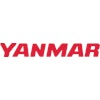
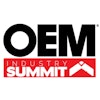
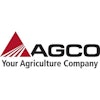
![Hcm Ax Landcros Press Release[32] jpg](https://img.oemoffhighway.com/mindful/acbm/workspaces/default/uploads/2025/11/hcmaxlandcros-press-release32jpg.mAEgsolr89.jpg?ar=16%3A9&auto=format%2Ccompress&fit=crop&h=135&q=70&w=240)



